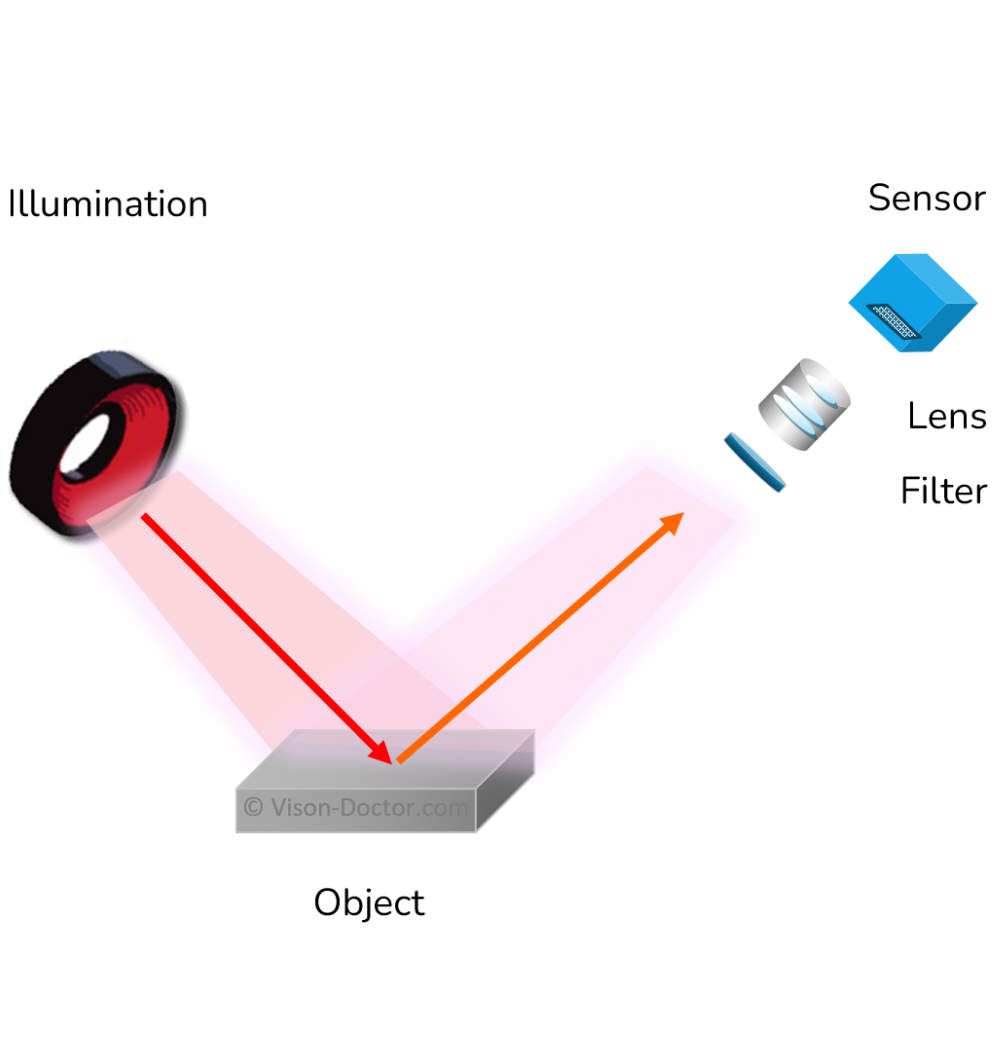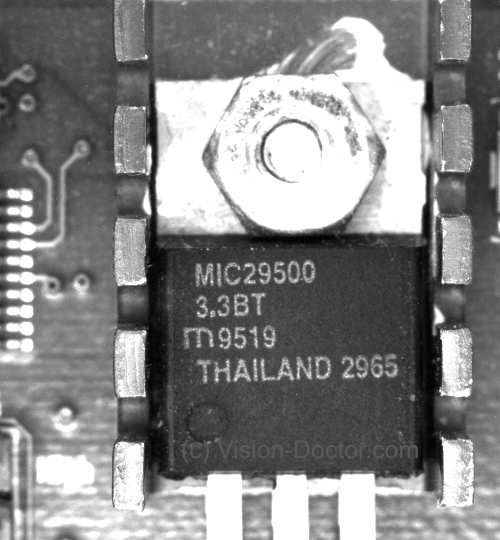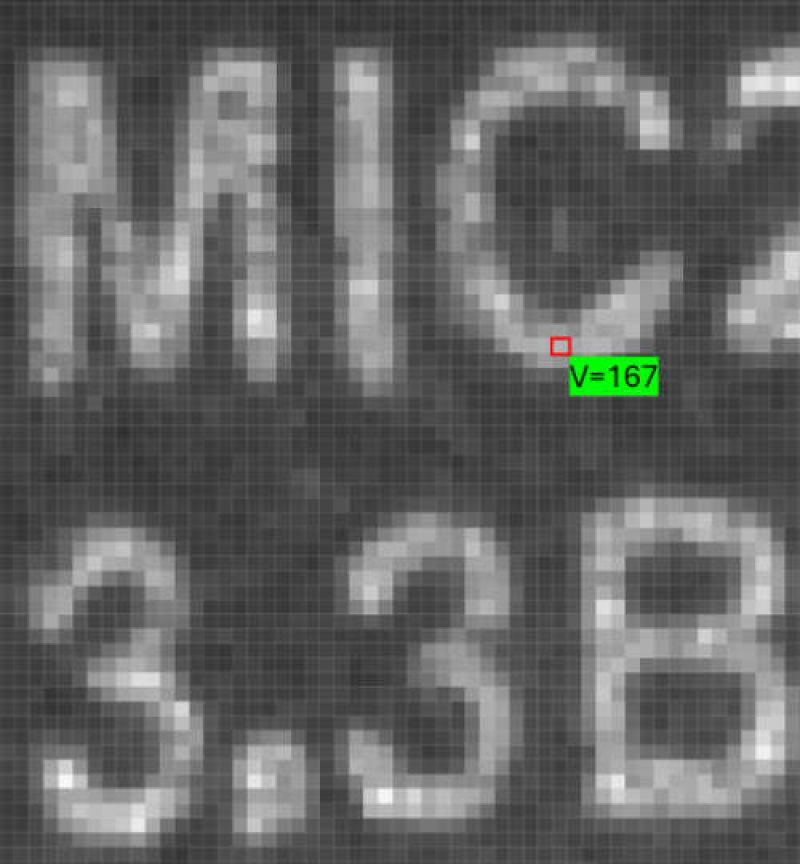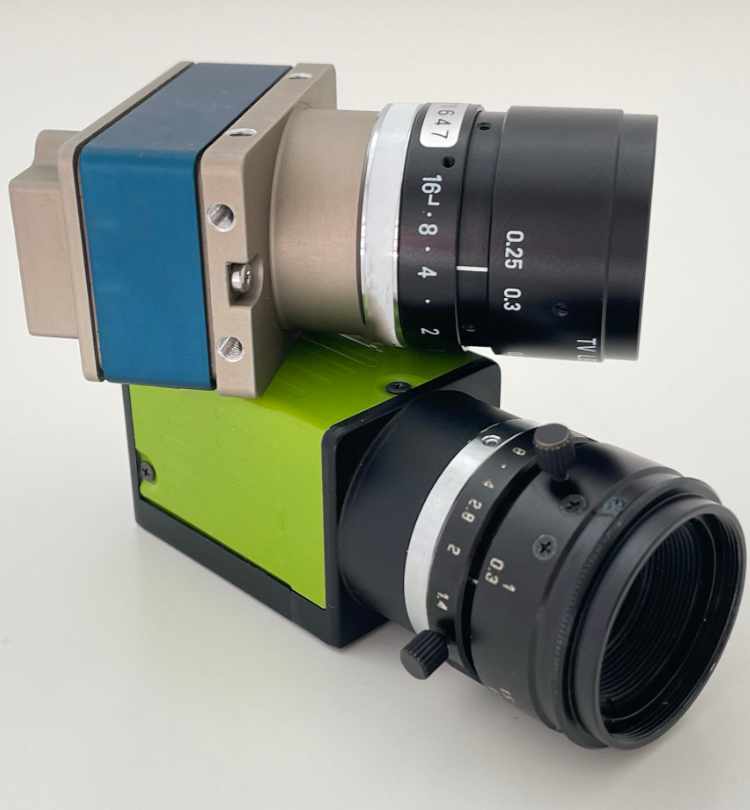





















For many industrial applications, 2D mono cameras are a cost-effective and straightforward solution. They are easy to implement and can produce a 2D image with just one shot, making elaborate scans, encoders, or drive systems unnecessary.
These extremely compact cameras can be used as vision sensors or intelligent cameras, making them versatile for various applications.
The clear distinction of specific object features from their surroundings is the main goal of 2D imaging. To achieve this goal, the highest possible contrast must be generated. The contrast must be significantly higher than the image noise to achieve optimal results. High contrast ensures that even the smallest defects and features are accurately detected.
The higher the contrast, the more reliable and robust the inspection becomes against changing environmental conditions and other interfering influences.
It is not the object itself that is inspected but a digital 2D image of the object! Let's look at this process:
The lighting is the foundation of any image capture. A light source emits light that falls on the object to be examined. The quality and intensity of the light source influence the detail and clarity of the image.
A portion of the incoming light is reflected by the object. This reflection is crucial as it contains information about the object's surface and structure. Differences in colour, texture, and shape of the object affect how the light is reflected.
The reflected light hits the lens. This lens images the object onto the sensor. The lens focuses the light, determining the sharpness and detail accuracy of the image.
The incoming photons are registered by the sensor pixels inside the sensor. Each pixel counts the number of incoming photons and generates electrical signals. The number and arrangement of the pixels influence the image resolution.
The electrical signals from the sensor pixels are converted into digital information. This process includes quantisation and the processing of the signals to create a digital image. The detail and colour accuracy of the image are determined by the quality and precision of the digitisation.


The electrical signals generated by the sensor are digitised and represented as a 2D matrix. Each element of the matrix represents a pixel and stores the brightness information of the corresponding image area.
The digital 2D image can now be evaluated using algorithms of BV software. This software enables the analysis and processing of brightness information to recognise patterns, structures, and other relevant features in the image.
In image processing, a standard bit depth of 8 bits is often used for monochrome images. This corresponds to 256 grey levels, where grey level 0 represents no photons, equating to black. Grey level 255 corresponds to fully saturated information, equating to white.
Of course, there are also many applications where 10, 12, or 16-bit grey level information is used, but this is rather the exception, as uncooled standard 2D cameras hardly deliver more than 8-bit usable information. After all, the additional information gain for standard inspections in the industry is often not really relevant. Processing in 8 bits requires only two bytes per pixel, while 10 to 16 bits require two bytes. Memory consumption and processing times are always an issue in fast industrial processes...

Vision-Doctor.com is a private, independent, non-commercial homepage project and not a technology provider or system integrator. Suitable technologies and further professional support can be obtained from the companies & partners listed below.
If necessary, I will be happy to provide a quick recommendation, contacts and brief information.
